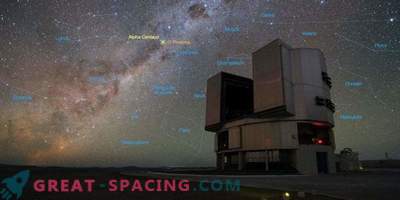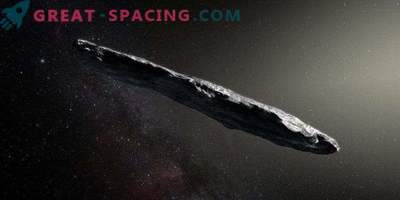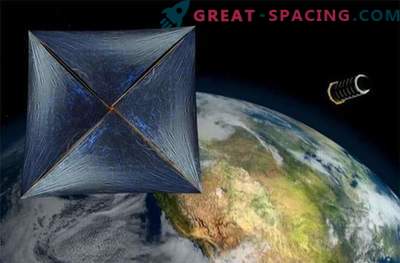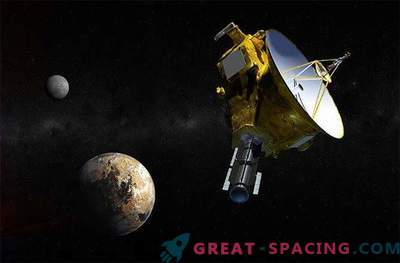
Seen on a cosmic scale, humanity lives on a tiny grain of sand, floating in an unimaginably deep ocean. The vast expanses of space separate even the closest stars, ensuring that if any intelligent life form tries to spread throughout the galaxy, then this would take considerable effort to overcome the interstellar seas.
When we look at the stars, in the hope that we can visit them one day, many argue that interstellar travel is impossible. In the end, the nearest known star system is more than 4 light years away from Earth.
Let's think for a moment: the light will take 8 minutes and 20 seconds to travel from the surface of the Sun to the atmosphere of our planet. Therefore, when you look at the Sun, know that the solar heat that you feel on your face has traveled 90 million miles through interplanetary space and arrived on your skin almost 9 minutes later.
But light takes about four and a half years to travel from our Sun to Alpha Centauri, the nearest star system outside our solar system, to cover 26 trillion miles of interstellar space. Now we have an idea of this scale; if we send a spaceship to Alpha Centauri using propulsion methods currently available to us, it would take us about 80,000 years. It is therefore not surprising that we feel in quarantine among the cosmic void.
As we can see, the interstellar journey is not so easy to fulfill and is a historical challenge and global efforts will have to be made to make it possible. And more and more scientists understand that, in fact, it is quite possible.
So, when on Tuesday, the day of the 55th anniversary of the heroic launch of Yuri Gagarin into space, a statement was made about Starshot Breakthrough, the world suddenly found out that there is a group of engineers, scientists, futurologists and entrepreneurs who see a future in which humanity will take this important step into the depths of the unknown, sending a fleet of tiny research robots to this "impossible" destination - Alpha Centauri. Moreover, British heavyweight theoretical physics Stephen Hawking is straining his efforts, while Russian billionaire Yuri Milner is investing up to $ 100 million at the start of the project. Famous individuals like Mark Zuckerberg are on the board of directors, and former director of NASA's Ames Research Center Pete Warden will lead the project. This, of course, is not the first project to consider the question of interstellar travel. Star-to-star jumps have been food for science fiction storylines for many decades, but the first notable plan came about in the British Interplanetary Society in the 1970s, which led to Project Daedalus - a monstrous unmanned interstellar ship as big as Empire State Building. Much of the mass of Daedalus arose because of the huge amount of fuel that would be required to accelerate the vehicle and brake it as soon as it reaches its destination. When studying interstellar space, Daedalus sent a powerful signal: send a large ship, or do not even think about traveling.
In this case, the spacecraft will be set in motion by a series of nuclear explosions using the method invented in the Cold War, known as movements due to nuclear impulses. This concept has given a lot, mainly what has become a breakthrough technology and a huge achievement in the field of materials research in the future and which made it possible to create such a vehicle.
Currently, an international team of scientists and engineers, continued the work of Daedalus, rethinking this original attempt in the non-profit group Icarus Interstellar, which began as a project of Icarus ("son of Daedalus"). Icarus now has several projects, all with the same ultimate goal: to move humankind towards the stars and overcome technological and socio-economic barriers along the way.
There were several seriously funded efforts to further develop interstellar technology, but this changed in 2011, when US research agency DARPA and NASA donated $ 500,000 to launch the 100-year-old Starship project, which is led by former NASA astronaut Mae Jemison. But the interstellar community has never seen such a huge financial support, which brings Starshot breakthrough - a fact that excited the members of the interstellar scientific community. "This is amazing," said Andreas Tziolas, co-founder and president of Icarus Interstellar, at Discovery News.
The key to the goal of Icarus Interstellar is an effort to bring peace to the delight of interstellar exploration. In such countless historical examples, humanity shines when it crosses borders and, having such lofty goals, can create a breakthrough or “breakthrough” technologies.
Notable examples include the space race when political ideals pushed the United States and the Soviet Union into orbit, and then landing on the moon in 1969. The technologies developed to obtain the final military superiority have matured to give us the space technologies that we take for granted today.
Often, new technologies developed along the way to a big goal have applications that may initially seem to be unpromising, but their unanticipated use to achieve this goal can transform our planet, from developing clean energy sources to finding ways to slow down and, perhaps, reverse climate change.
Usually, research in the field of new technologies was born to solve the problem, and Tziolas was able to identify serious problems that the Starshot project will have to face almost immediately.
Starshot's key idea is to design a tiny spacecraft that will use a laser pulse to accelerate it to 20 percent of the speed of light. Starshot's ultimate goal is to achieve Alpha Centauri for one generation. These spacecraft, known as "nanocraft", will need to travel 1000 times faster than the fastest spacecraft built by mankind. New Horizons - NASA spacecraft, which flew past Pluto in 2015, broke through the outer solar system at a speed of 770,000 miles a day. The Voyager-1 spacecraft flew even faster, covering almost a million miles a day. Although Alpha Centauri is as fast as New Horizons and Voyager-1, it hasn't reached its destination for tens of thousands of years. It is interesting to note that the Voyager-1 is now an interstellar probe that has left the magnetic bubble of the heliosphere of our Sun and is currently the only interstellar spacecraft. But given that the nuclear-powered spacecraft was launched in 1977 and spent almost 4 decades only to reach interstellar space, we must move faster. Much faster.
And the Starshot team understands this and went the way of miniaturization in order to build a fleet of tiny spacecraft weighing no more than a gram each. Of course, packing all the instruments needed to operate and control such a guided gaze by a small spacecraft, at such a limited mass, may seem nonsense, but all this research work will shift the paradigm from most other interstellar concepts. These will be tiny robots equipped with cameras, sensors and navigation equipment attached to a thin and light sail that will use the power of a powerful ground-based laser to fly from the Solar System to Alpha Centauri.
But, as Tziolas points out, although laser technology is rapidly moving forward, it is difficult to imagine what material the nanocraft will be built from. Even if their laser sails reflect most of the laser energy that falls on them, there will be a huge heating problem. Frankly, the nanocraft will be burned by a hypothetical 100-gigawatt laser if the heat is not radiated efficiently. But in order to radiate heat, nanocraft will need radiators that will increase the mass.
"With no coolant, you have to radiate (heat) back into space, and the only way to do this is to use microwaves, and the only way to really do it is to increase the surface area," said Tziolas. "So you need radiators that radiate heat and that adds weight ... radiators are likely to be metal sheets." Maybe this is one of those problems where new technologies are born? Ultra-light, high-temperature, easily cooled materials that could have a huge number of applications in space and industry can be developed. Who knows.
Assuming that these nanocraft can be launched and shipped outside the solar system, they should be very durable and resilient. But 20 years is a long time in space, and although the interstellar medium is rather empty by the standards of the Solar System, these vehicles can collide with anything, even the smallest dust grains along its 20-year path can affect any component, just like high speed bullet smashes porcelain cup. Let's not forget that these nanocraft will travel at 20 percent of the speed of light — more than 130 million miles per hour. Even though they are small, will they need protection? Perhaps, but this will further increase their weight, ultimately slowing them down.
In accordance with the current plan, the failure of the mission will be mitigated by sending a huge amount of nanocraft to the mission. Although many nanocraft may die on their way, some may arrive at their destination.
So there are nuts and bolts for the connection. These are necessary things to send a tiny spaceship to another star, but what's the point if we can't see the pictures? This nanocraft needs transmitters to send home data, but how powerful should these transmitters be?
“In my opinion, the big problem is communication,” said Robert Freeland, deputy project manager for Icarus. “Several members of the Icarus project team spent several months last year designing a communications system for the Icarus ship. It should be recognized that the data transfer rate for Icarus is several orders of magnitude higher than that of the project, because Icarus is designed to completely slow down the Alpha Centauri system and creating a station for long-term, detailed observations. " Freeland points out that nanocraft Starshot are designed for simple passage past Alpha Centauri, without going into orbit - a key advantage to make them small and light. During the flight, they will need to conduct a quick series of observations, and then after a while send the data home. But weakening (loss of signal quality) at a huge interstellar distance can be a problem with a low-power transmitter packed in such a tiny ship.
"If this is so, then there are arguments in favor of larger probes, with larger power supplies," he added. "Give me a kilogram of payload, and the problem becomes a little simpler. But increasing the payload by 1000 times will require some combination of a larger laser, a larger sail, a longer acceleration time, or a lower maximum speed."
Then the problems seem to multiply rapidly.
What about navigation? Of course, a nanocraft can have tiny cameras that can act as star direction finders, orienting them to the right path, but how do we know when they reach Alpha Centauri? If you take snapshots of hypothetical planets orbiting a star, how do these probes know where (and when) it needs to be done? Always keep in mind that it takes about 4 years for nanocraft to send back the data, and we have to send the "meeting" command 4 years before the probes reach Alpha Centauri! Perhaps, before launching, we will have space telescopes that will accurately determine exoplanets in the Alpha Centauri system, and these nanoprobes will have some kind of artificial intelligence to help them develop their orbits upon arrival.
What about the practical issues of having a powerful laser on Earth, shining through the atmosphere? Could it be dangerous for nature, air traffic and (possibly) space flights? Perhaps we would need to reconsider the plan for locating this laser on Earth, perhaps we should find a way to base it in space. What about the moon? Problems and obvious bans abound, but at least this is the beginning. For the first time, there seems to be a global interest in reaching stars, and this is beginning to be accompanied by a significant amount of money that will be used to make huge advances in fundamental interstellar science. Ultimately, the Starshot mission cannot even be called a plan, this is a starting point, but interstellar science needs this kind of investment, at least to test the theory and work with emerging problems.
"We have to start somewhere ... interest in interstellar intelligence, this is what we fought for," said Tziolas. "This is one of the tasks of Icarus Interstellar to make interstellar exploration commonplace to raise awareness."
Groups such as Icarus will identify problems and develop solutions, finding new technologies along the way that could change our way of life. As a surge of commercial space interests in the United States supports the delivery of cargo to the International Space Station and the launch of satellites into orbit, we may see the development of industry in advanced propulsion technologies that can attract business and inspire children to begin education in science and technology.
But there are several main reasons why humanity should be motivated to sail in interstellar seas. Stephen Hawking is an outspoken supporter of the direction of humanity towards the stars, in case our planet fails in the future. "Earth is a great place, but it can't last forever," he said in a Starshot press release. "Sooner or later, we have to look at the stars. The Starshot breakthrough is a very exciting first step along the way."
Although the destruction of the Earth is certainly a factor of motivation, I agree that, as a species, we are motivated to explore the boundaries of our world and our intellect. By taking initiative in space, exploring new worlds in our solar system and striving for the stars, we reveal the best qualities of our species for a long journey that can help us understand our place in space.











































